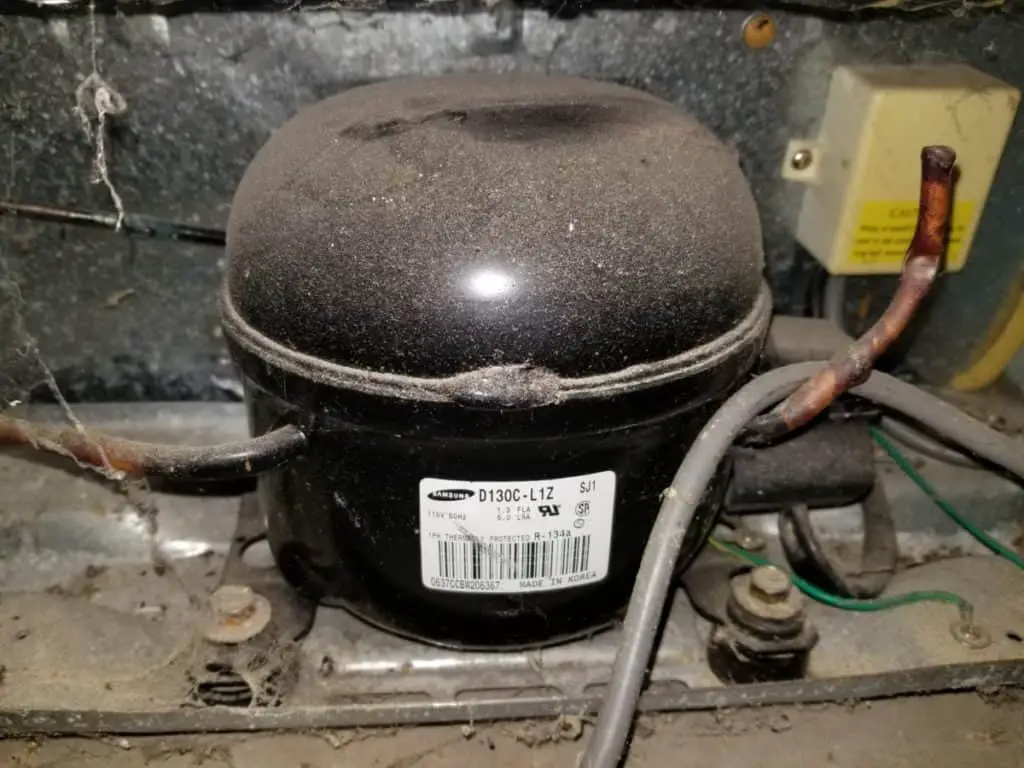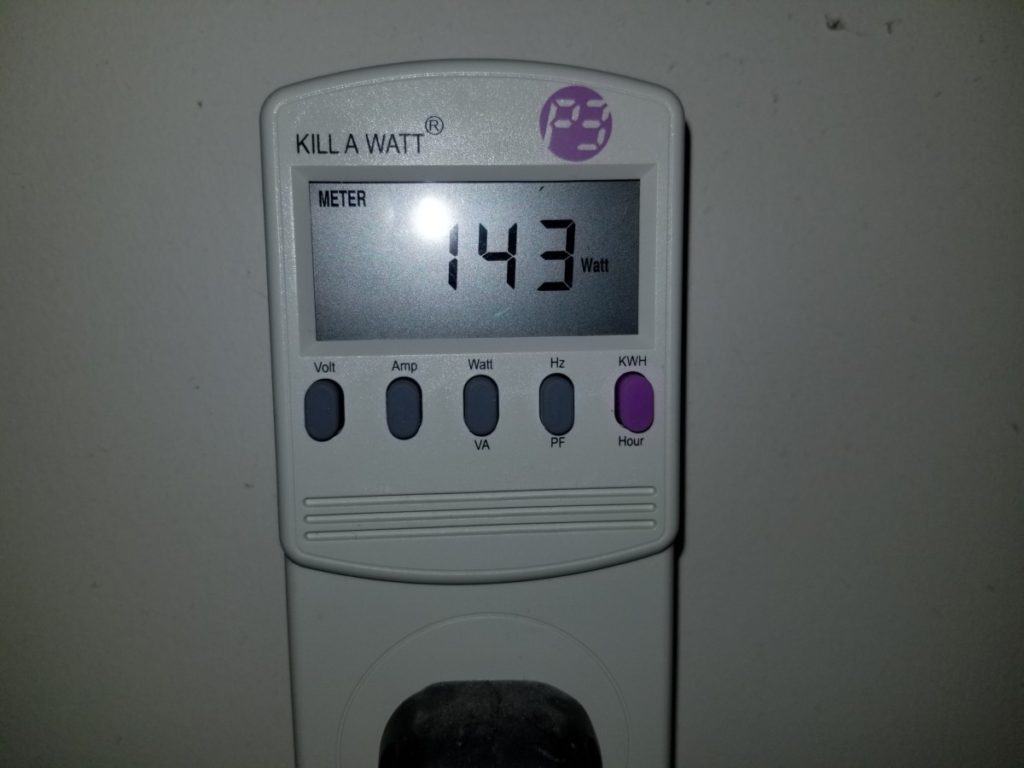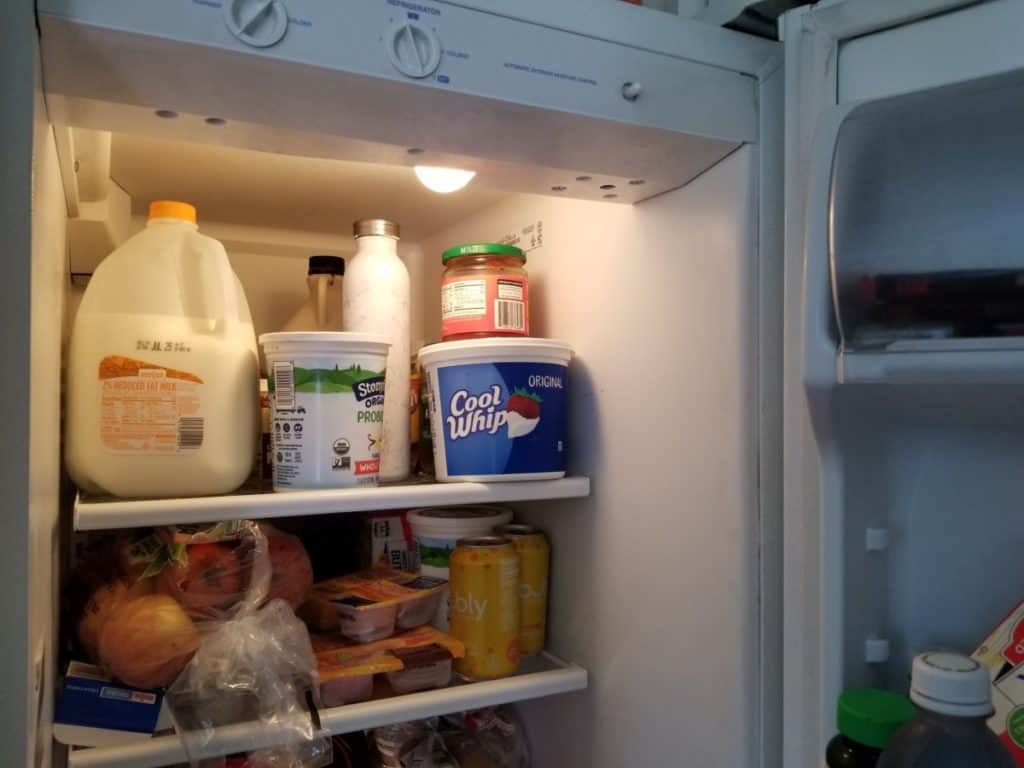Did your power just flicker or go out and leave you wondering how you would keep all of that food cold with a generator?
Identifying the problem is the first step, but now you may be wondering what size of generator you will need to keep your food from spoiling.
Don’t panic, I’ve got you covered.
The minimum generator size to power most refrigerators is 2000-watts and will likely be enough to overcome the starting watts of the compressor. However, it is recommended to at least use a 3,000-watt generator to avoid maxing out its capacity when powering other items.
That’s the short answer and I’ll quickly dig into how much power your fridge demands as well as a critical consideration you need to make prior to purchasing a generator to power it.
Let’s jump right in!
How Much Power Does a Refrigerator Need?
Energy Start Refrigerator Generator Requirements:
| Running Watts (Actual) | 130 – 175 Watts |
| Starting Watts (Actual) | 1,250 – 1,750 Watts |
| Bare Minimum Generator Size* | 2,000 Watts (2kW) |
| Recommended Generator Size | 3,000+ (3kW) |
As you probably noticed with the table above, there are “running watts” and “starting watts” listed. This is due to the refrigerator’s compressor.
In order to start it, it needs an extra boost of energy to get things moving, so to speak. Think of when you jump on a bike and try to start moving. The first few times your legs turn the peddles are the hardest. Once you get momentum, it becomes far easier. The same applies to electronically powered items such as compressors.

For the first second or two, the compressor will demand anywhere from 1,250-1,750 watts (maybe a bit less, maybe a bit more) in order to kick on. Once that is done, it drops to about 130 – 150 watts.
Without specialty electrician tools, you’re not going to know the exact starting wattage of your fridge. It will be a guess and you’ll want to give yourself room for error.
If you look at the sticker on the inside of your fridge with the energy requirements, you’ll likely see a number far greater. I believe these are the maximum amounts that the fridge is capable of running at. Using a Kill-a-Watt meter, like this one seen on Amazon reveals a number far less. Usually 1/5 or so of the advertised number.

Keep in mind that your fridge runs the compressor about 8 hours per day (1/3 of the time) and that means about 20 minutes per hour if averaged out. Having things on like the ice maker, and not replacing the incandescent bulb with a higher efficiency LED bulb will consume more energy as well.
Critical Consideration Before Buying a Generator to Power Your Fridge
As we mentioned above, the fridge has “starting watts” that may be demanded at any time so your generator is technically “on-call for duty“ at any moment and must be prepared to supply the needed starting watts or you will risk burning up the compressor (worst case) or tripping a breaker on the generator (best case).
I mention this due to the fact that when the power goes out you’re probably not going to sit around in the dark just twiddling your thumbs while your fridge is doing its thing. You’re likely going to want lighting and entertainment.
Let’s say, for instance, your fridge requires 1750 watts (which you won’t know exactly unless you measure it) and you have a 2,000-watt generator. Yes, barely enough to do the job. Now, let’s say you plug in the TV, X-Box, 3 lamps with incandescent lights and you’re now up to an additional 400 watts.
That’s all good and well after your compressor has started and is only running at 130 watts. It can handle the additional 400 watts since you have a 2,000 watt generator.
The problem is when the compressor kicks on again and you are now demanding 2,150 watts from your 2,000-watt generator. Something will have to give. Either you’ll burn up the compressor, you’ll fry your TV/X-Box, or you’ll trip a breaker on your generator (hopefully).

That’s why I highly recommend sizing up to at least 3,500 – 5,000 watts. You can do a lot of things with a generator that size, though not necessarily all at once. For instance, my Honda 3,500 watt generator is even enough to run my well water pump, but I wouldn’t dare run it while the fridge was plugged in.
The last consideration is that the more you value your appliances, the better the quality you should buy when it comes to generators.
Compressors and items with microprocessors and circuit boards (TV’s, computers) can be finicky with “dirty power”. You run the risk of burning them up if the power (the sine waves in the electricity) is not delivered in a smooth and stable enough manner.
Paying the extra $100-$200 now might well be worth it when it comes to buying a generator to upgrade from a no-name brand to one with a solid reputation behind it of the same size.
I can’t imagine the stress of saving money by buying a cheap generator, firing it up during a power outage and having it ruin the compressor on your fridge during a 90 degree day. The cost of a new fridge and all of the food lost will make you see red!
My Recommended Generators for Powering Your Fridge
If you’re looking for a solid workhorse that can power nearly everything in your house (though necessarily not all at once), then the Champion Power Equipment 7500-Watt Portable Generator with Electric Start on Amazon is well worth considering.
With the electric start, you won’t throw out your shoulder by yanking on the pull cord, and it comes with a wheel kit for easy transport around your property.
It has a middle of the road decibel level of 74 at 23 feet but you can easily take a few steps to mitigate that if you need to to make your generator quieter with an article I wrote. For reference, a 74 decibel reading is just over a blow dryer or busy city street.
A slightly smaller sized option is the DuroMax XP5500EH 5000 watt Dual Fuel Hybrid Generator with Electric Start on Amazon and it also comes with a wheel kit and lets you avoid the tiresome pull cord.
It has a 69 decibel rating which is a little quieter than the Champion model but the human ear won’t be able to discern very well between the two with such a close decibel rating.
If you check out the DuroMax option, they have various other sizes on the same page that you can check out.

Whatever generator you end up buying, just remember that generators are typically advertised with their “peak wattage” instead of their running watts. “Peak wattage” is the max limit of the generator and it can only sustain it for a very short period of time (to help with a compressor’s starting watts, for instance). So, a 5,000 watt generator might actually have running watts of 4,250, for example.
It is best to select a generator where you won’t exceed 75% of the capacity of the running watts (the occasional surge above it is fine). Keeping your generator running at 75% effort or less will ensure that you won’t stress it out prematurely and run it into the ground.
I hope this article helped you out and I wish you the best of luck preparing for your next power outage!

